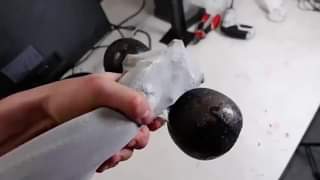
Get the latest international news and world events from around the world.




Elon Musk’s claims Neuralink’s brain implants can take ‘photos’ of memories and help paraplegics walk again
Elon Musk has a knack for accomplishing feats that others consider improbable. From blasting rockets into space to becoming the king of the EV industry, Musk is determined to make history.
His latest passion project is Neuralink—a company that is developing a brain implant that will link the human brain directly to computers. He claims this brain-computer interface (BCI) will enable humans to carry out actions through thought alone. One of Musk’s first goals: helping paraplegics regain their independence.
But it doesn’t stop there. The company’s technology, Musk hopes, will one day not only treat but cure brain disorders and even save memories so people can revisit them like photo albums.




Novel design greatly improves output from commercial circuit boards next to superconducting qubits
Researchers at the National Institute of Standards and Technology (NIST) have constructed and tested a system that allows commercial electronic components—such as microprocessors on circuit boards—to operate in close proximity with ultra-cold devices employed in quantum information processing. That design allows four times as much data to be output for the same number of connected wires.
In the rising excitement about quantum computing, it can be easy to overlook the physical fact that the data produced by manipulation of quantum bits (qubits) at cryogenic temperatures a few thousandths of a degree above absolute zero still has to be initiated, read out, and stored using conventional electronics, which presently work only at room temperature, several meters away from the qubits. This separation has obstructed development of quantum computing devices that outperform their classical counterparts.
That extra distance between the quantum computing elements and the external electronics requires extra time for signals to travel, which also causes signals to degrade. In addition, each (comparatively very hot) wire needed to connect the electronics to the cryogenic components adds heat, making it hard to maintain the ultracold temperature required for the quantum devices to work.
Team develops fingertip sensitivity for robots
In a paper published on February 23, 2022 in Nature Machine Intelligence, a team of scientists at the Max Planck Institute for Intelligent Systems (MPI-IS) introduce a robust soft haptic sensor named “Insight” that uses computer vision and a deep neural network to accurately estimate where objects come into contact with the sensor and how large the applied forces are. The research project is a significant step toward robots being able to feel their environment as accurately as humans and animals. Like its natural counterpart, the fingertip sensor is very sensitive, robust, and high-resolution.
The thumb-shaped sensor is made of a soft shell built around a lightweight stiff skeleton. This skeleton holds up the structure much like bones stabilize the soft finger tissue. The shell is made from an elastomer mixed with dark but reflective aluminum flakes, resulting in an opaque grayish color that prevents any external light finding its way in. Hidden inside this finger-sized cap is a tiny 160-degree fish-eye camera, which records colorful images, illuminated by a ring of LEDs.
When any objects touch the sensor’s shell, the appearance of the color pattern inside the sensor changes. The camera records images many times per second and feeds a deep neural network with this data. The algorithm detects even the smallest change in light in each pixel. Within a fraction of a second, the trained machine-learning model can map out where exactly the finger is contacting an object, determine how strong the forces are, and indicate the force direction. The model infers what scientists call a force map: It provides a force vector for every point in the three-dimensional fingertip.